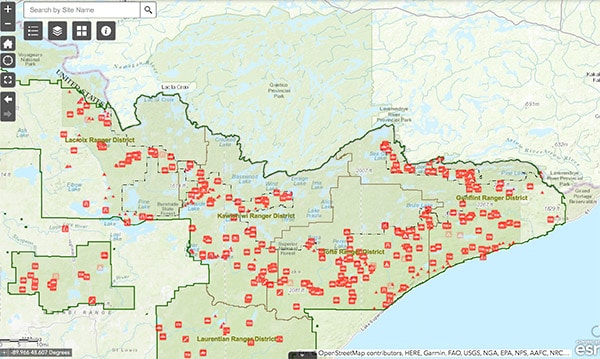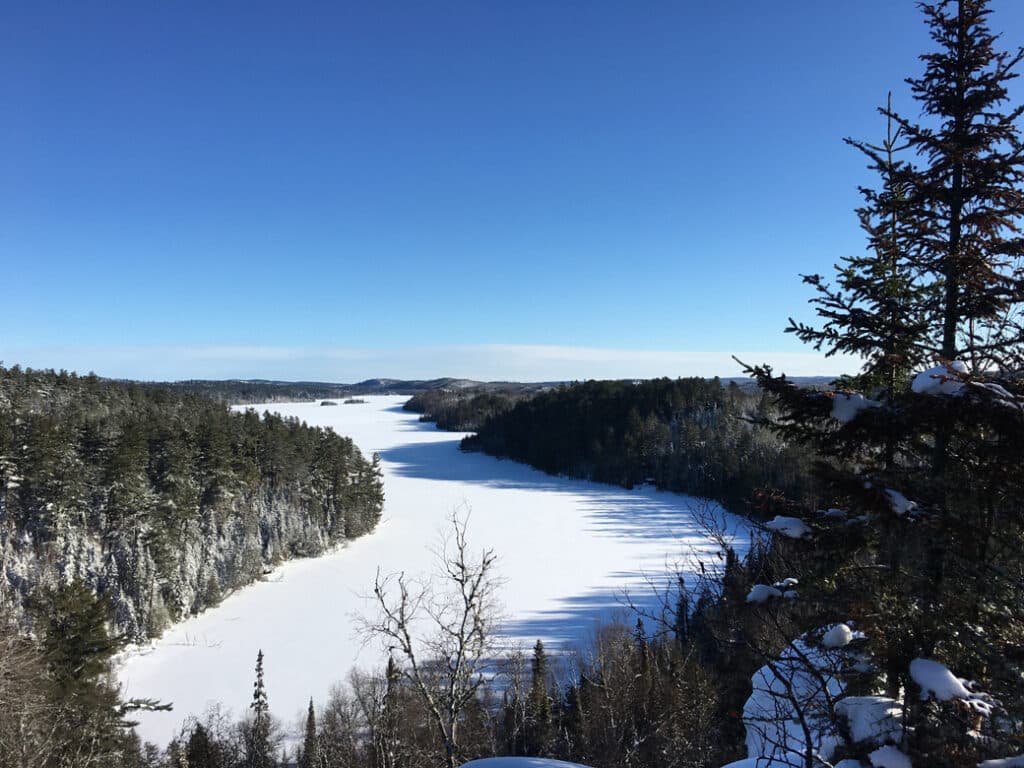
I was chatting with a woman at a local hiking trail a few weeks ago. She told me how she had moved to Minnesota as a young adult and just recently fell in love with the incredible outdoor recreation the state has to offer. “But not in the winter,” she added. “Oh, come on,” I nudged her. “Getting outdoors during Minnesota winters isn’t that bad.” I smiled as she recounted her first winter here. She said, “I couldn’t believe that it was possible to get to zero degrees. Then it was negative 10. Then negative 20. I was in disbelief that everything and everyone kept functioning. And at the same time, I worried about what would happen if it got any colder.”
It wasn’t that long ago that I shared her sentiment. I can’t get enough time outside during the mild months of May through September. But other than an occasional winter trip to Minnesota’s North Shore region, I had little desire to get outdoors during the long Minnesota winters.

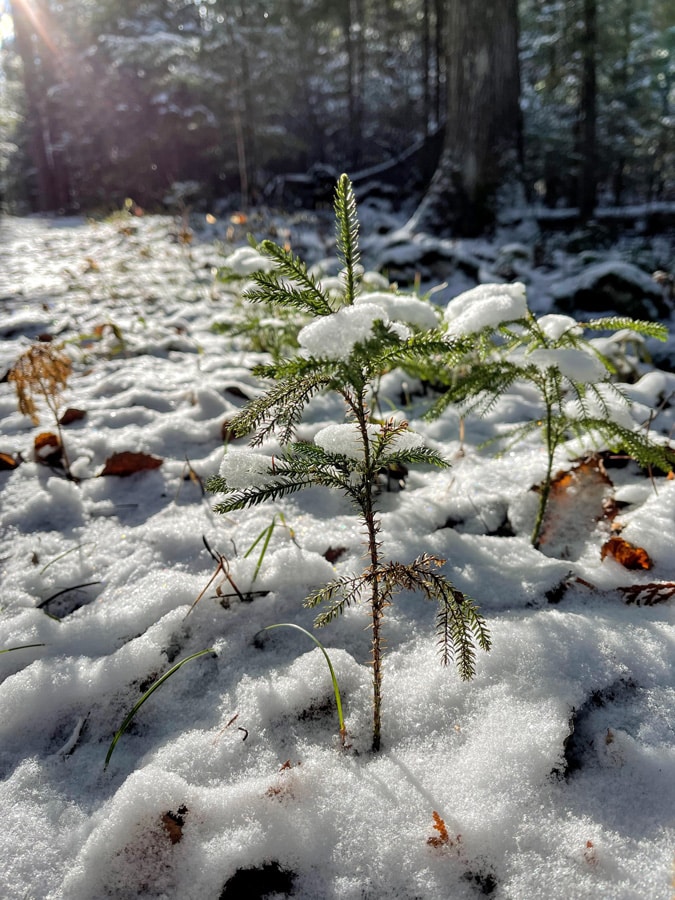
Every winter I tried to come up with ways to cope. Then one winter, I decided that I might as well try and embrace it. I went out and bought both my husband and me warm winter clothes and we were officially in. I started slow, committing to getting outdoors three times a week. We went hiking, rented cross-country skis, and eventually invested in snowshoes. We weren’t only coping, we actually looked forward to these winter activities. These days, not a day goes by that I don’t go outside.
Choosing to embrace the long Minnesota winters by getting outdoors has improved my life in countless ways. Still, I don’t get nearly as much time outdoors as I’d like during the colder months. So that’s why I’m sharing three great tips to bring the outside in.

Three ways to connect to the outdoors during Minnesota winters

1 – Reminiscing
If you’re anything like me, I bet you take a lot of incredible photographs during your outdoor adventures. But then you never really do anything with them. Minnesota winters are a great time to review your photographs and relive all of the wonderful memories you made. While you’re at it, it might be fun to get physical prints of your photographs and make a photo album to share your memories with friends, family, and coworkers.
I keep journals from all of our outdoor adventures. These detailed notes come in handy when we’re planning upcoming trips. But it’s also fun to reread them and reminisce about all the incredible—and challenging—outdoor experiences we enjoyed that year.
If you don’t keep a journal, winter is a good time to sit down and write out all that you’ve accomplished that year in the great outdoors. Not only will you be able to reference your notes while planning future adventures, but you can also enjoy a nice warm hike down memory lane on the coldest winter days.
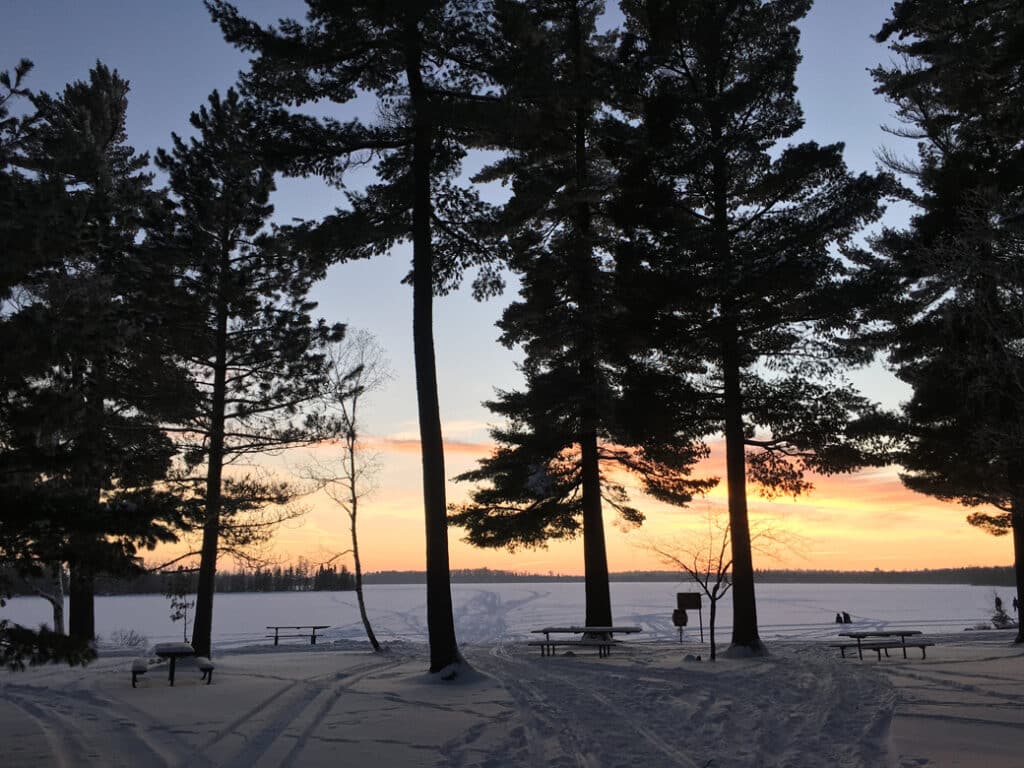
2 – Learning
In previous articles, I’ve shared how my spouse and I discovered the outdoors later in life. That means, that for the most part, we’re entirely self-taught. On each step of our journey—whether it was hiking, camping, canoeing, or backpacking—we researched and learned as much as we could before we went out.
Thankfully, that’s much easier to do today than it was two decades ago when we got started. You can start right here with how-to and adventure articles from across Minnesota’s Arrowhead region.
The Minnesota DNR has incredible resources as well. A great place to begin is with their Outdoor Skills and Stewardship webinars. You can check out past and upcoming webinars here. They also host wonderful interpretive programs year-round that you can learn about here. If plants and animals are more your thing, you can learn all about Minnesota’s unique flora and fauna here and here.
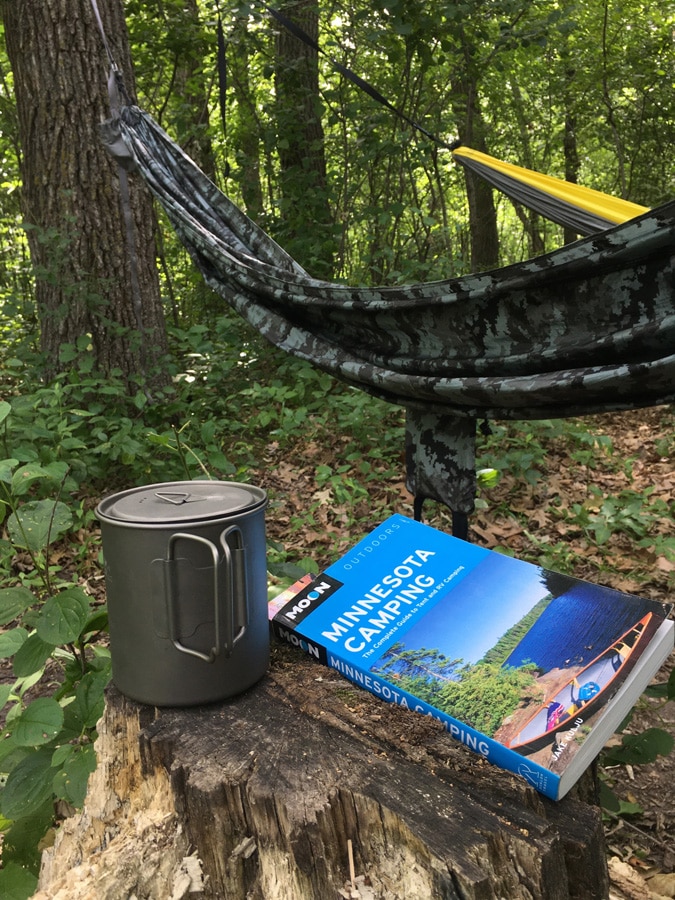
Here in Minnesota, we are blessed with an abundance of water and the endless recreational activities that come with them. Swimming, boating, paddling, and ice fishing are all popular sports. Unfortunately, each year there are too many water-based fatalities. Although my spouse and I spend a lot of time on the water and have become quite comfortable navigating it, we know how serious water safety is. Before going out on a frozen lake, be sure to review this important information about ice safety. And as you dream about your summer adventures, it’s never too early to revisit these water safety tips.
Leave No Trace launched a fantastic free online course this year where you can learn everything you need to know about outdoor ethics. You can find that course here.
Another great learning opportunity is to attend a class. During a recent spring when winter decided to hang on well into April, my husband and I attended our first Wilderness and Remote First Aid Course by the American Red Cross. Although it was an investment in time and money, we both wish we’d attended the course much earlier in our outdoor journey.
Finally, books are always a great resource and make great gifts. I’ve mentioned the Superior Hiking Trail Guidebook in nearly every article I’ve written about the SHT. You can learn more about the guidebook and purchase your own copy here.
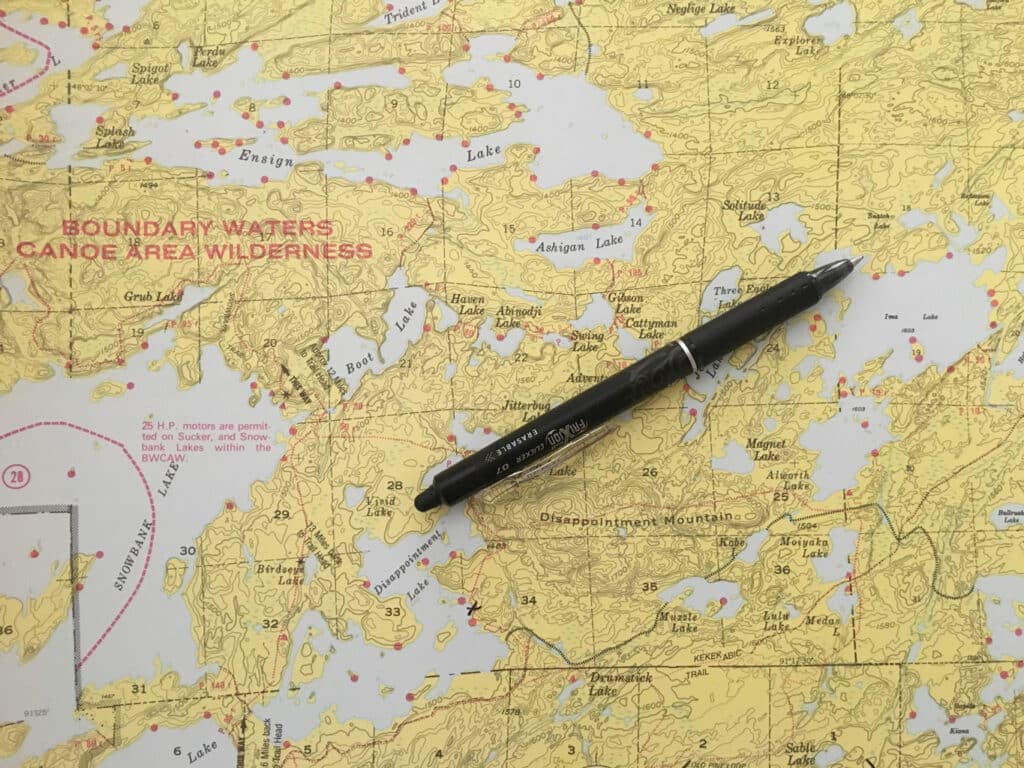
When we first started dreaming about camping overnight in the BWCA, I picked up copies of both Boundary Waters Canoe Area: Western Region and Boundary Waters Canoe Area: Eastern Region from my local library. I’ve also enjoyed the There and Back Guides by Andrew Slade: Hiking the North Shore and Camping the North Shore. In researching this article, I discovered a new title that I’ve yet to pick up: Skiing the North Shore.
3 – Planning
The final way to stay excited about the outdoors during long Minnesota winters is to start planning. Permits for overnight travel in the BWCA become available on the last Wednesday in January. We always enjoy getting lost in the planning and looking for new places we haven’t explored yet—especially in the dead of winter.
Are campgrounds more your thing? You can make your reservations for Minnesota state parks up to 120 days in advance. My favorite campgrounds in Minnesota are in the Superior National Forest. These campsites are released six months in advance. You can explore campgrounds and book your adventure here.
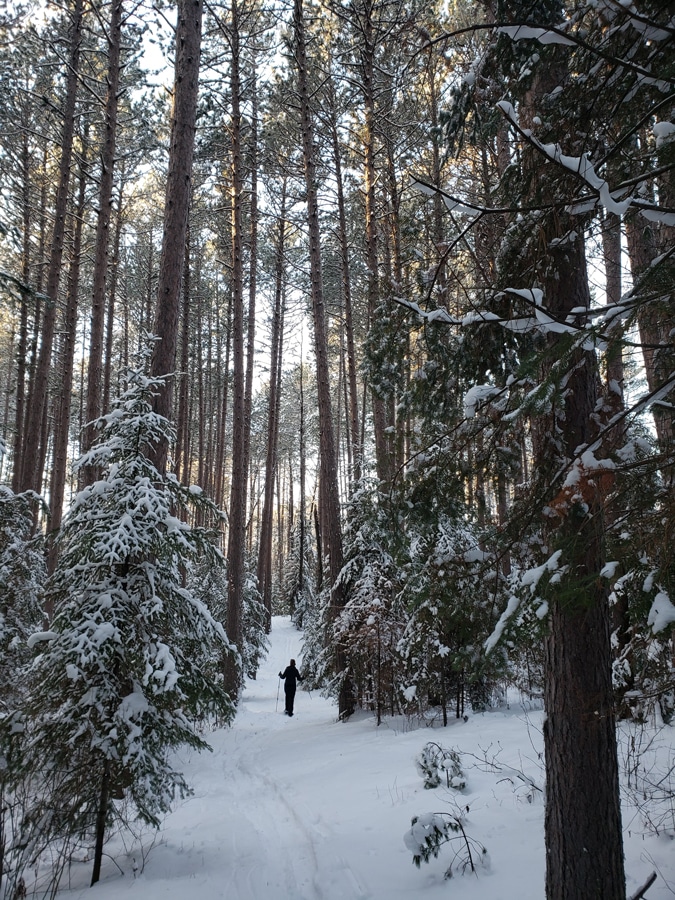

Bonus tip to connect to the outdoors during Minnesota winters
While I enjoy all of the activities I’ve shared with you so far, I’ve found that the best way to connect to the outdoors during long Minnesota winters is to get outside. Set a goal for how many times you want to get outside each week and then hold yourself accountable and do it. You might also want to commit to trying something new. No matter what you choose, nothing will make the long Minnesota winters fly by like getting outside.
Here in Minnesota, we’re blessed with an abundance of outdoor recreation all year long. This is especially true in Northeast Minnesota—home of the SHT, BWCAW, and the state’s best state parks. So while you’re entitled to some groaning—especially when we’re hit with an April snowstorm—you’ll have a much more enjoyable winter when you follow these tips.
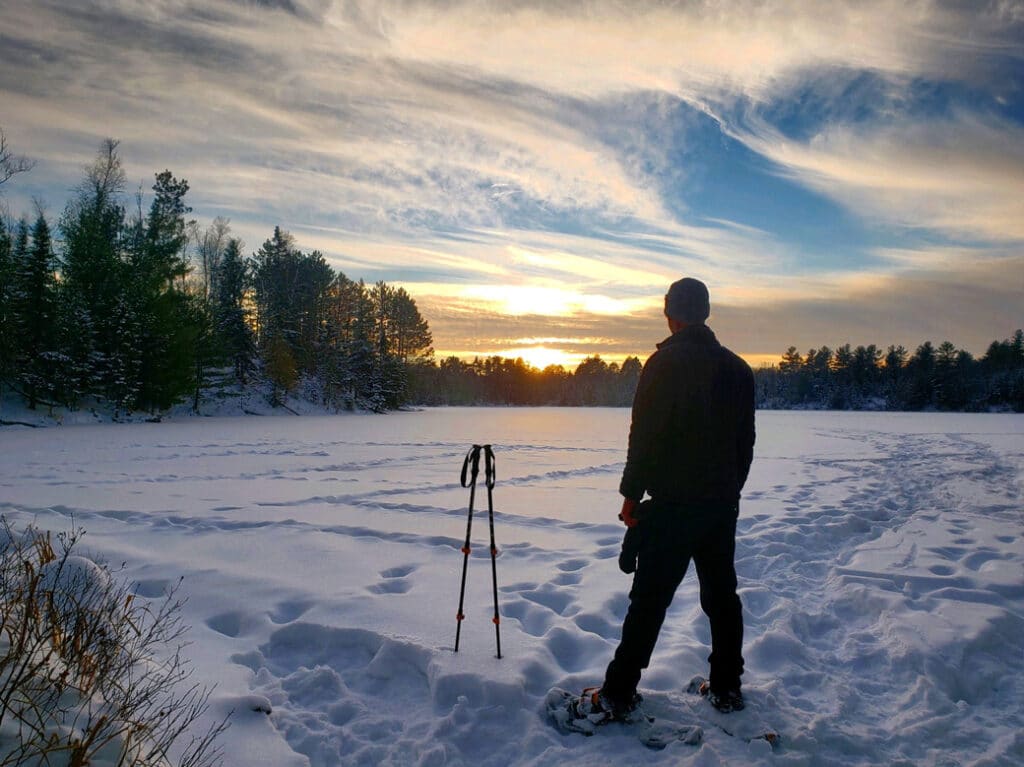
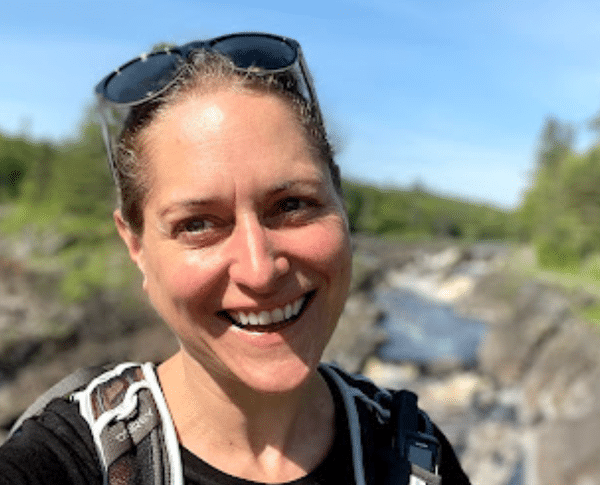
Holly Scherer is a Minnesota-based writer, photographer, outdoorswoman, and guide. She’s most at home in the great outdoors; camping, hiking, paddling, cycling, and gardening. When she’s not on an adventure, she and her husband live in the Twin Cities where they’re fond of saying, “home is where we store our outdoor gear.”


